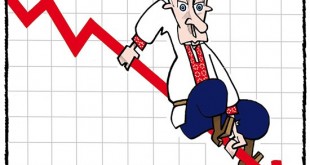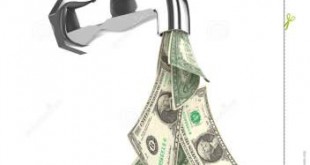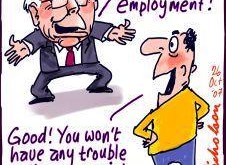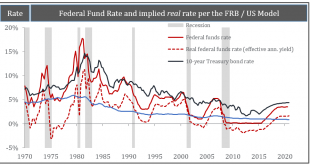Le phagocytage en art de guerre! Le phagocytage par la finance internationale est sans aucun doute l’arme de destruction massive de ce siècle. Là où le phagocytage est possible, les guerres militaires non pas lieu d’être. Le phagocytage économique est basée sur la maxime bien connue des top managers mondialistes « eat or be eaten ». Pourquoi et comment cette croyance quasi religieuse s’est développée demeure un mystère. Le phagocytage est un système qui est aujourd’hui tellement avancée...
Read More »Dollar, the KING, Liliane Held-Khawam
L’année 2016 annonce-t-elle un petit ou un gros bras de fer entre la Chine et le Casino de la planète finance? Les médias se sont émus toute la journée suite à la dégringolade de la bourse chinoise qui a perdu pas mal de plumes et dont les échanges ont été suspendus (cf article ci-dessous de Challenges). Entrer une légende Evolution de l’indice boursier CSI300 Pourtant, ce qui nous intéresse ici, c’est l’évolution de la monnaie américaine qui gagne une fois de plus du terrain. Après...
Read More »La suprématie du dollar américain malgré la baisse du prix du pétrole. Liliane Held-Khawam + Vous avez dit… récession mondiale? Par Gérald Fillion
Remontera? Remontera pas? Remontera quand? Et s’il ne remontait pas?… Chacun y va de ses graphiques plus complexes les uns que les autres pour expliquer et prévoir l’évolution du prix du pétrole…. Essayons de voir les choses de manière pragmatique et simplifiée mais en introduisant la complexité nouvelle des données d’un monde muté. La mutation radicale du Système fait que les raisonnements qui étaient autrefois valables ne le sont plus aujourd’hui ou le sont moins. Voilà notre hypothèse....
Read More »Argentine:Le dollar américain prend de sacrées couleurs. Le peuple pleure… + L’Argentine va négocier avec les fonds vautours, Le Figaro
Avant-propos: Les deux articles ci-dessous doivent être pris en compte simultanément. Les argentins ont perdu l’équivalent de 40% de la valeur de leur fortune après une simple décision de leur nouveau gouvernement. Tous leurs produits importés de Etats-Unis augmentent de 40%. Or, en économie un perdant est toujours accompagné d’un gagnant. Une simple signature et voilà qu’un même volume de dollars américain va subitement augmenter sa capacité d’investissement de 40%. Voilà qui va faire la...
Read More »Tout le monde s’en fiche. Olivier Delamarche
« Quand le sage montre la lune, le crétin regarde le doigt » Encore une fois cet adage se vérifie, le doigt en question étant Madame YELLEN, le « cerveau » en chef de la FED. Tout le monde ne parle que d’elle depuis des mois ainsi que de ses frères jumeaux, Monsieur Draghi pour la BCE, Monsieur Kuroda au Japon et Monsieur Zhou XIAOCHUAN pour la Chine. Cette belle brochette d’incompétents notoires dominent le monde et disent à tous, les banquiers, gérants, stratégistes, économistes de...
Read More »A l’aube d’un cataclysme monétaire et financier. Par Michel Santi.
C’est l’abondance des liquidités qui a propulsé les marchés financiers et l’ensemble des actifs depuis 2009. Cette gigantesque reflation, orchestrée à coups de 10 à 12 trillions de dollars injectés dans le système, a été la source principale ayant autorisé une euphorie globale puisque 80% de la hausse des marchés boursiers depuis 2009 est redevable aux baisses de taux quantitatives des banques centrales. Il serait nécessaire aujourd’hui de créer 200 à 250 milliards de dollars par...
Read More »What the Fed Did NOT do
We will not spend much time discussing what the FOMC did as tons of ink have been spilled on that already. We will rather spend more time on what the FOMC did not do. A short recap will suffice; the FOMC did raise the interest rate band by 25 basis points to 0.25 – 0.5 per cent from the seven yearlong band of 0 – 0.25 per cent. No surprise there as this move was well communicated weeks in advance. As discussed in Unintended Consequences of Liftoff the recent move to secure a floor in the...
Read More »Etats-Unis, le mirage du plein emploi… Pierre Sabatier & Raphaël BECANNE
Demain seront publiées les créations de postes pour novembre aux Etats-Unis, que les chiffres ADP parus hier laissent attendre au-dessus du consensus. Comme depuis plusieurs mois déjà de nombreux observateurs y verront sans doute un signal du retour au plein-emploi de l’économie américaine, à l’image du journal Les Echos qui titrait un de ses articles du 9 novembre « Retour du plein-emploi aux Etats-Unis ». Sachant que la Banque centrale américaine a parmi ses objectifs l’atteinte du...
Read More »How Peak Debt Constrain the Fed from Moving Rates Higher
We have argued for a long time that 2016 will probably be a year of recession in the US and the Federal Reserve’s intent on raising rates will only help expedite it. We believe the current rate cycle will be short lived as the Federal Reserve is constrained by the heavy debt load weighing on the US economy. Or more specifically, the large share of unproductive and counterproductive debt that drain the US economy for resources. Source: Federal Reserve – Financial Accounts of the United...
Read More »Unintended consequences of lift-off in a world of excess reserves
Bar a disastrous NFP print this coming Friday the US Federal Reserve will change the target range for the Federal Reserve (Fed) Bank’s Funds rate from the current level of zero – 25bp to 25 – 50bp on December 16th. The Fed will effectively raise the overnight interbank rate of interest to around 30bp from an average of only 12bp in 2015. Ironically, that will be seven years, to the day, when the Fed first lowered rates to the current band. During the period of ZIRP madness, the Fed’s...
Read More » Swiss Economicblogs.org
Swiss Economicblogs.org










